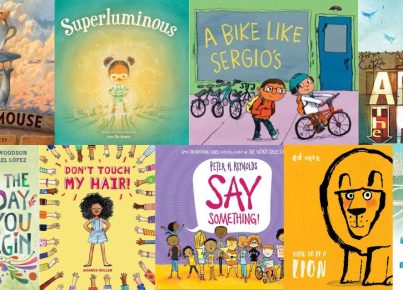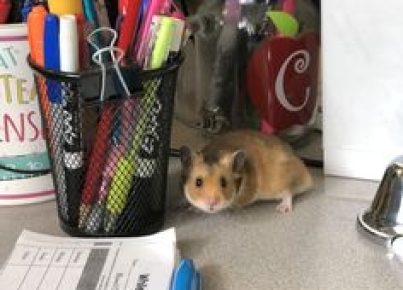Are you looking for high school STEM/STEAM apps, tools, and resources that you can use with your students? If so, we have you covered. Check out our list below. Let us know if there are any that we missed.
DigitalEd– Helps online educators in science, technology, engineering, and mathematics to make learning better for students. With Maple™, the world-leading math software from Maplesoft™, providing mathematical back-up, DigitalEd creates an efficient platform for online math-based education.
Khan Academy– Khan Academy has more than 40,000 interactive Common Core-aligned practice questions and above 10,000 videos and explanations in economics, history, math, and more. This is the best study app and tutoring app for students of all ages who are struggling in science and other subjects. You can easily bookmark your best content to “Your List,” which can be used offline when you’re not connected to the Internet.
FlinnSTEM Powered by IMSA Fusion– IMSA Fusion is a complete STEM program that provides additional enrichment to students interested in science and mathematics. The name IMSA Fusion comes from the blending of inquiry-based student content and in-depth teacher content. Instructors who implement this program receive much more than teacher instructions with student pages and a box of supplies; they also receive hours of video-based, on-demand online training that truly sets IMSA Fusion apart from any other solution available.
Morphi– Morphi is an app that allows you to create 3-D models that can – be printed into real tangible objects. Using visualization, innovation, creativity, prototypes, and education, create your best models today. Morphi can also be used as a starting place to learn any STEAM subject, stop motion animation, product or graphic design, or for Maker education. One version of Morphi is free, and volume purchases are available.
Querium Corporation – Querium uses AI in their company to help students with STEM skills so they can be ready for further studies at high schools, colleges, and universities. The Querium platform delivers personalized, bite-sized lessons and step-by-step tutoring assistance. Its personalized program is called StepWise, and it works on smartphones and computers.The company uses artificial intelligence for STEM (math, engineering, technology, and science education) applications. The app’s cognitive assistant helps students as they come across obstacles.
The Mimio MyBot Educational Robotic System – is a powerful and innovative robotics program that enables students from pre-school to high school to develop STEM skills and a passion for programming and robotics. Through innovative robots and a comprehensive software platform, educators receive an out-of-the-box solution, complete with a robust curriculum, STEM lessons, tutorials, and videos. Since internet access or connectivity is not necessary, connection with existing school networks is eliminated, thus preventing a cyber-security risk. Most importantly, MyBot’s simple, inviting, and browser-based user interface speeds the time spent getting the students up, running, and learning in the robotics environment.
The PocketLab – PocketLab is a wireless sensor for exploring the world and building science experiments in the classroom. PocketLab connects to your iPhone or iPad and streams measurement data that you can see and record. It measures acceleration, force, angular velocity, magnetic field, pressure, altitude, and temperature. PocketLab is the latest attempt to make affordable sensors for classroom use.
Sound Uncovered – This app allows children to learn sounds using science as a tool. Users can select from 15 topics, accompanied by a “What’s Going On” article. The Find the Highest Note feature lets the user tap keys in a clockwise direction until they pinpoint the highest note. The question mark at the bottom of the screen provides information about sound phenomena.
Spore – Imagine you could create a species! Now, bring it to life in Spore. This game guides players through the evolution of their species in five stages: cell, creature, tribal, city, and space. Players gather resources to ensure the survival of their species, including Spore’s late-game currency. Players can choose their method of dominating other species using violent and nonviolent options available in each game.
Chairs! Organic Chemistry Game – This app is an interactive puzzle game designed to teach organic chemistry by having students learn about chair conformations. It is designed as a game in which students can learn and have fun at the same time. Users learn by forming different types of bonds, including axial and equatorial bonds. Kids are ranked based on how well they perform. This game has 13 levels with increasing difficulty at each level.
Contraption Maker – This is a game in which players act as wacky engineers. The game aims to get the missing parts of machines by doing a series of repair actions. The game also has built-in puzzles that test players, from simple challenges to advanced brain teasers. Players also design their machines and share the results online.
Couragion – Couragion can be used to help kids identify career choices. In the beginning, kids get to complete a questionnaire by filling in the details with the applicable answers. The results of the survey will be used to assign to different STEM-related career choices. In Couragion, kids are engaged and educated about such career choices.
Happy Atoms – Happy Atoms is a physical and digital teaching tool that lets kids discover the world of molecules in an intuitive, hands-on way. This interactive learning tool combines a digital app with a physical modeling set that lets students from fourth grade through college approach chemistry from a different angle. With Happy Atoms, kids learn key the difference between elements, feel the forces that bond them together, experiment with ways to combine them and discover the relationships between molecular structure and properties.
Meet Science: Magnetism and Electricity – This tool is divided into four main categories, each of which targets a specific way to educate kids. The Learn category gives kids access to seven different lessons. In the Experiment category, students to perform the experiments found at the end of each lesson. The Glossary category presents the definitions of concepts for the student to read. Mini games are included to combine fun and learning.



